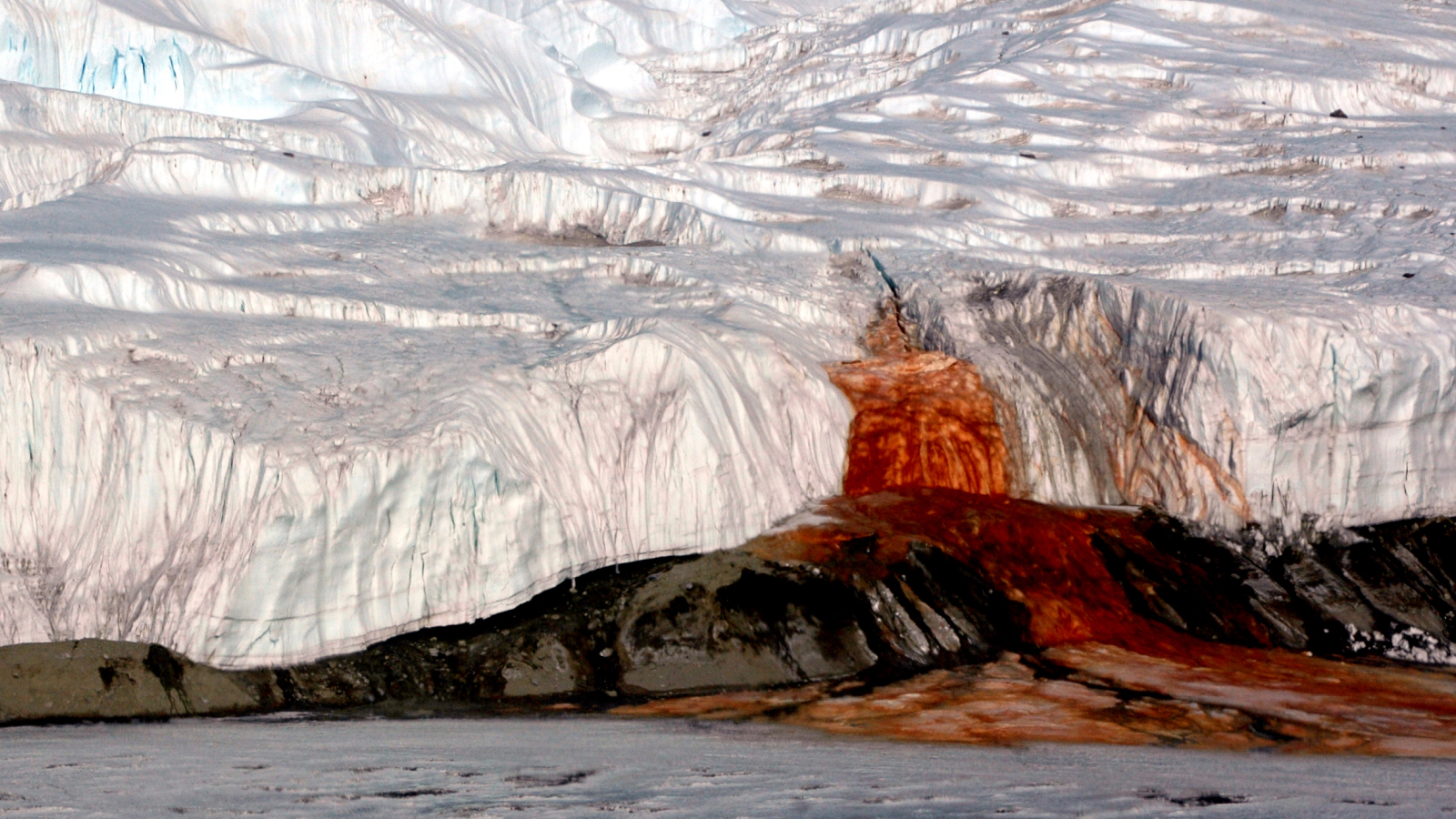
Name: Blood Falls
Location: Taylor Glacier, East Antarctica
Coordinates: -77.71654733868606, 162.26658111086073
Why it's incredible: The falls' crimson waters could easily be mistaken for blood.
Blood Falls features crimson waters that sporadically stream out of fissures in Taylor Glacier and into Lake Bonney in East Antarctica. The falls are named for their gory appearance, which is particularly striking against the pristine-white surfaces of the glacier.
Geographer, anthropologist and explorer Thomas Griffith Taylor first documented the falls in 1911, while he was on the ill-fated Terra Nova expedition. Taylor survived the expedition and gave his name both to the glacier where he found the spewing red water and to Taylor Valley, into which the glacier flows.
Taylor and his contemporaries attributed the red color of the water to red algae, but we now know this to be incorrect. Instead, research now shows that the waterfall is rich in iron, which reacts with oxygen in the air when the water emerges from the glacier, staining it a bloody crimson color.
Unlike meltwater from Taylor Glacier itself, Blood Falls' water is salty, pointing to a separate briny source within the glacier. In 2017, researchers discovered the waterfall's hidden heart roughly 1,300 feet (400 meters) beneath the ice and 300 feet (90 meters) from the blood-red waterfall. The size of the reservoir is unknown, but researchers think it formed when ancient seawater flooded the McMurdo Dry Valleys — a row of largely snow-free valleys that includes Taylor Valley — before Taylor Glacier froze solid. The timing of this flooding event is unclear, with estimates ranging between 5.5 million and 20,000 years ago.
Related: 'We were in disbelief': Antarctica is behaving in a way we've never seen before. Can it recover?
The 2017 study also revealed that the water in the reservoir is liquid, despite the glacier being stable at temperatures well below freezing. This is possible because water releases heat as it freezes, warming the surrounding area, and because salty water requires colder temperatures to freeze than fresh water does.
"Taylor Glacier is the coldest known glacier to have persistently flowing water," lead author Erin Pettit, a professor in the College of Earth, Ocean and Atmospheric Sciences at Oregon State University, said in a statement at the time.
The water is discharged at Blood Falls episodically rather than continuously, Pettit told Live Science in 2017. The reason for this is unknown.
A 2019 analysis of the reservoir found that microorganisms inhabit the briny waters, which potentially offers new insights into the search for extraterrestrial life.







